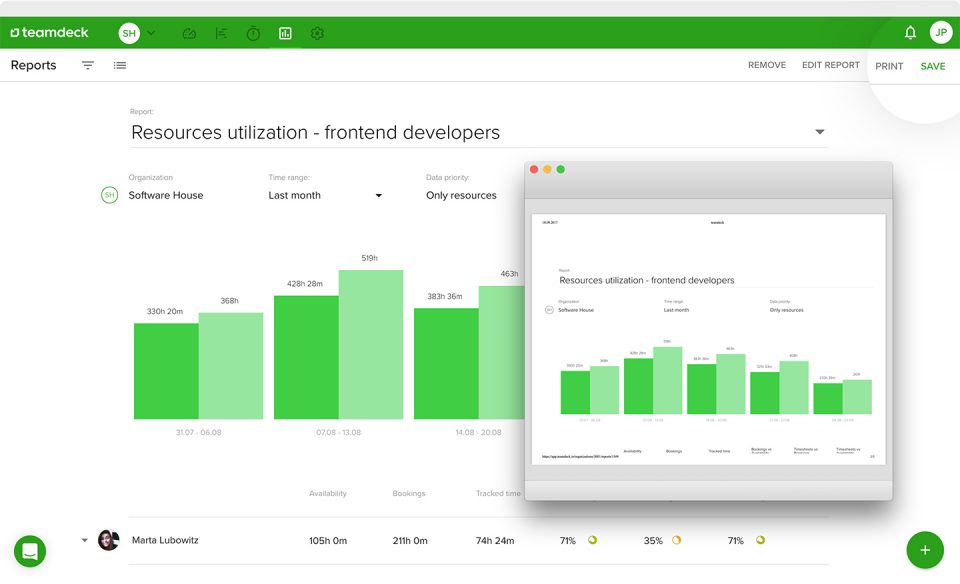Many companies are currently looking for cost optimization ideas in response to the global pandemic and its economic consequences. When trying to minimize HR costs, teams decide to implement hiring freezes or use their HR technology more effectively, all in order to stay profitable and avoid layoffs. In the spirit of making better use of available technology, we want to show you how businesses can cut business costs with project resource management.
Our tips will work for many different verticals, but companies that work for multiple clients at a time (agencies, consultancies, software houses) will perhaps find them to be especially helpful. It’s the case because when you juggle several projects simultaneously, planning and managing resources is very challenging.
First, let’s define resource management.
What is resource management?
In our guide to project resource management, we defined it as making the most efficient use of finite resources given at your disposal. What kind of resources are we talking about? People, of course, but also pieces of equipment, rooms, vehicles, or something else depending on the nature of your business. In this blog post, however, we’ll focus on human resource management.
Making the most efficient use of your resources means that you utilize them efficiently, allocate the right people to the right projects (resource allocation), and analyze your team’s work to find optimization opportunities. These steps are crucial to cutting business costs, as you will see in the next couple of paragraphs.
Using good resource planning software will help you tremendously. Of course, the app won’t do all of your work for you, but it will allow you to do things efficiently, saving time and money in the process. In this blog post, you’ll see screens from Teamdeck, an app used by teams worldwide.
How will effective resource management help you save money?
Developing Teamdeck, a complete resource management app, we often talk with our clients about the effect resource management has on their budgets.
Apptension was one of the first companies that used Teamdeck to plan and manage their employees’ work. Piotr Bandosz, Apptension’s Head of Finances and People, told us:
Without Teamdeck, we’ve been wasting $11,130 in employees’ time monthly to deal with common managerial struggles. Teamdeck helped us to reduce this waste to $1,249.50, which saves us $9,880.50 a month.
Apptension is a 50-people team, so if you’re running a larger company, you can expect even more savings. How is that possible? Let’s jump into details – how do you save money when you implement resource management?
Improved resource utilization
Why is resource utilization so crucial? In short: it benefits both the employer and employees. Think about underutilization, for example. People waiting on tasks generate costs for the company but may also become very frustrated themselves. On the other hand, overutilization may lead to employee burnout and extra costs for the employer if you pay more for overtime. It’s quite simple: with optimal utilization, you don’t generate unnecessary costs, and your team members can enjoy a balanced team workload.
Resource management is key to maintaining good resource utilization. It requires you to pay attention to resource planning and assigning work to employees that can take on more tasks. When you see all of your team members’ bookings in the resource calendar, it’s much easier to spot people who are under- or overutilized.







